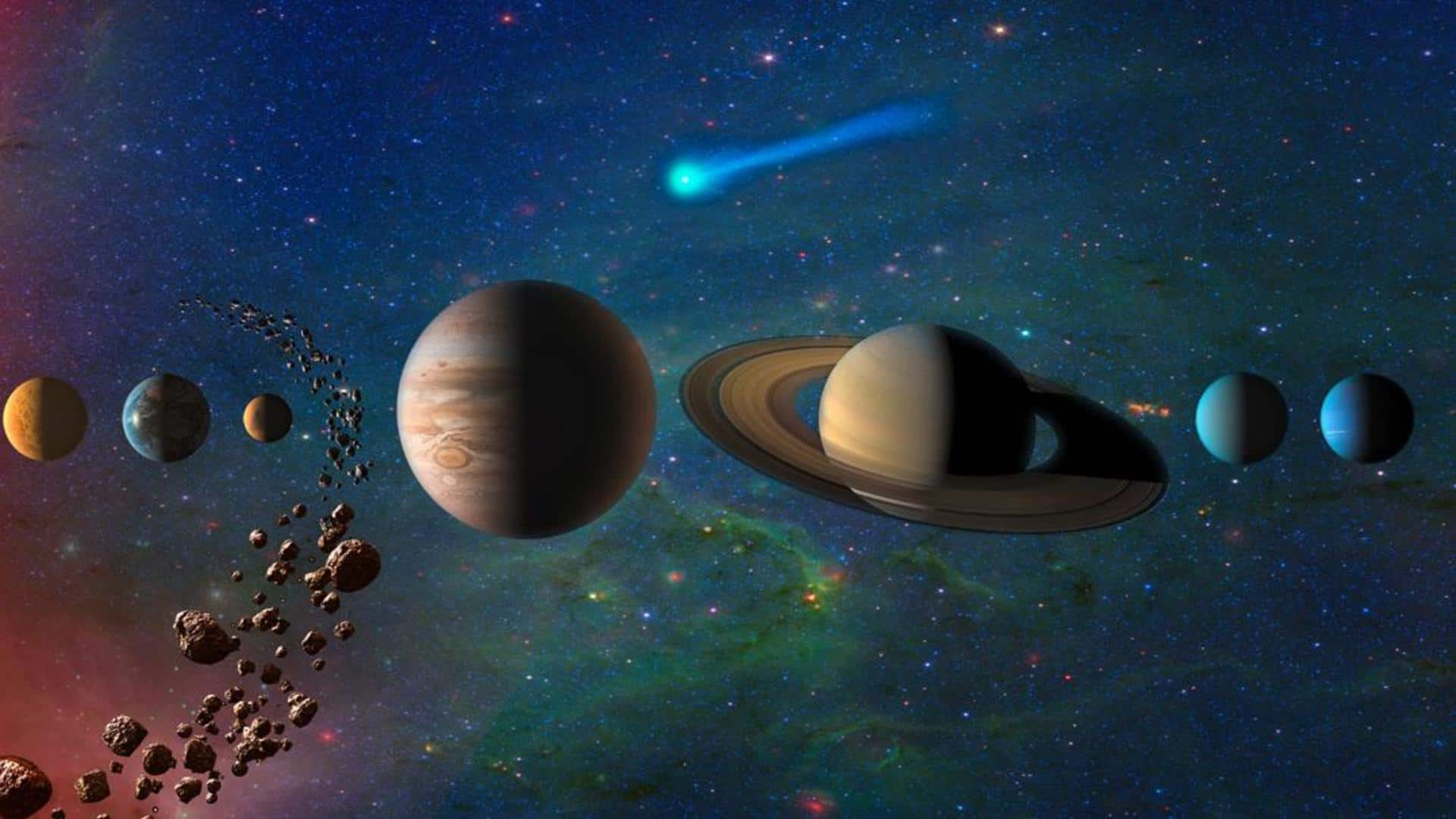
Rare planetary alignment on June 17: How to watch
What's the story
A rare five-planet alignment will occur on June 17 and it's not one you would want to miss. Shortly before sunrise, Saturn, Neptune, Jupiter, Uranus, and Mercury will come together, forming a spectacular sighting in the eastern skies. It is also important to mention that the weather must be in your favor to watch this cosmic event.
Context
Why does this story matter?
So far, this year has been filled with several exciting astronomical events. From the rare Jupiter-Venus-Mars conjunction to the lunar eclipse and meteor showers, we have seen a couple of stunning sightings. Now, another rare cosmic spectacle is bound to grace the sky and if you have the chance to view the event, you should.
Event
Jupiter will be the brightest of the five planets
An hour before sunrise on June 17, look to the east. You should see Jupiter near the horizon. It will be the brightest of the five planets. Next, look slightly upward and to the right. In the southeastern direction, close to the horizon, you should see Saturn. It will appear fainter and smaller than Jupiter, but it should be visible to the naked eye.
Alignment
Neptune and Uranus will appear the faintest in the sky
Mercury will appear to the left and below Jupiter, right above the horizon. The remaining two planets, Neptune and Uranus, will appear the faintest in the sky, making them slightly harder to spot. You would most likely need binoculars or a telescope to identify these two planets. Uranus will be roughly midway between Mercury and Jupiter while Neptune will lie between Jupiter and Saturn.
Information
Astronomy apps can help you track the planetary alignment better
To sum it up, you should be seeing the planets in this order from the lowest to the highest: Mercury, Uranus, Jupiter, Neptune, and, Saturn. For a better viewing experience, you can download stargazing apps like Stellarium, which is free on Android and iOS.
Official words
Planetary alignments are always known to occur
"Planetary alignments have always occurred—they are times when the planets in the solar system are all roughly positioned in the same direction when viewed from Earth," said Don Pollacco, an exoplanet expert from the University of Warwick, to Forbes. "Given that we understand the orbits of the planets we can predict when these alignments will occur," added Pollaco.
Instructions
Why you shouldn't miss the planetary alignment on June 17
As mentioned before, you would not want to miss this planetary alignment on June 17. That's because the next worthwhile five-planet alignment will occur only on September 8, 2040, per Starwalk. People may get to see this planetary alignment after June 17 as well. However, this is the best date to view them because they will be shining at their brightest.